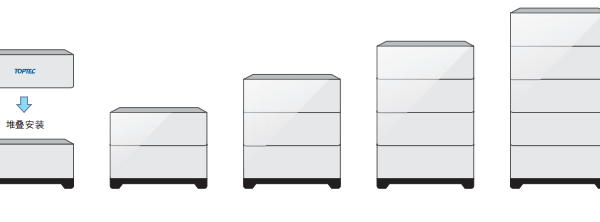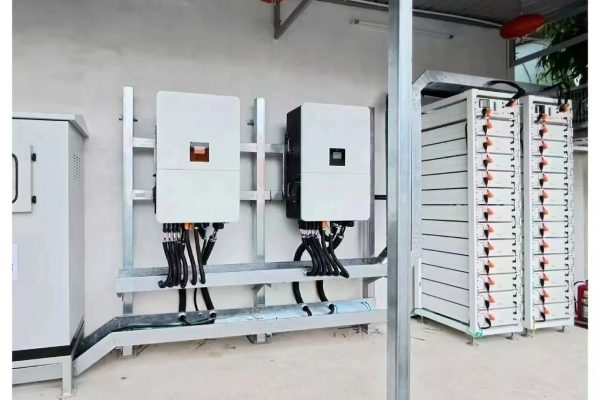Maximizing Performance, Lifespan, and Cost-Efficiency in Solar + Storage Designs
In PV + Energy Storage Systems (ESS), many installers focus on panel wattage, inverter capacity, and battery size. But one factor is often overlooked — and it can make or break system performance:
✅ The battery charging strategy.
A good charging strategy ensures longer battery life, stable system operation, and lower energy costs. A poor strategy can lead to premature battery failure, inefficient solar usage, and angry customers.
In this article, we explain the key concepts behind battery charging strategies in PV+ESS systems, including how to balance solar, grid, and generator input — especially in residential and C&I hybrid systems.
🔋 Why Charging Strategy Matters
Your battery is not just a backup — it’s a buffer, a load balancer, and a peak shaver. The charging plan determines:
| Factor | Impact |
|---|---|
| Charging source priority | Affects cost and solar self-consumption rate |
| Charge/discharge timing | Influences peak shaving, TOU savings |
| Charging voltage & current | Affects battery lifespan and safety |
| SOC limits & hysteresis | Prevents overcharge/deep discharge |
| Coordination with inverter | Ensures smooth switching and generator integration |
🔌 Charging Sources in PV+ESS Systems
Most hybrid systems today allow charging from multiple sources:
- Solar PV (DC or AC coupled)
- Grid (if allowed)
- Diesel generator
- (Optional) Wind or hydro
The charging strategy determines when and how each source is used based on:
- Time of day
- Solar generation forecast
- Battery State of Charge (SoC)
- Grid tariff schedule
- Load profile
🧠 Common Charging Strategies
⚡ 1. Solar-First Charging (Default in most hybrid inverters)
- PV charges the battery during the day
- Grid or gen used only when solar is insufficient
- Maximizes self-consumption
- Ideal for off-grid and grid-poor areas
🏠 2. Time-of-Use (TOU) Charging
- System charges battery from grid during off-peak hours (e.g., midnight)
- Discharges battery during peak pricing hours
- Ideal for markets like California, Australia, South Africa
Requires:
- TOU schedule setup in inverter
- Smart meter integration or API (for dynamic pricing)
🧰 3. Generator-Support Charging
- Used in off-grid or weak-grid setups
- Battery is charged from genset when SoC drops below limit (e.g., 20%)
- Auto-start feature triggers genset
- Charging stops once SoC or time limit is reached
Must avoid:
- Frequent gen starts (use hysteresis or min runtime)
- Generator overload from inverter charging current
📐 Key Charging Parameters to Adjust
| Parameter | Recommended Setting |
|---|---|
| Max charge current | 0.2–0.5C for LFP; follow BMS spec |
| Charge cut-off voltage | 3.55–3.65V per cell (≈ 56.8–58.4V for 48V systems) |
| Low SoC charge trigger | 15–20% (off-grid), 30% (grid-tied) |
| Grid charge time window | Set to off-peak hours (e.g., 00:00–05:00) |
| Battery type selection | Ensure correct chemistry (LFP, NMC, lead-acid) is chosen in inverter UI |
🛠 Charging Strategy by Use Case
| Application | Ideal Strategy |
|---|---|
| Urban homes with TOU pricing | TOU grid charge + solar priority |
| Rural off-grid site | PV first, generator as last resort |
| Commercial with peak demand charges | Solar + battery charging during low-demand, discharge during peaks |
| Telecom or mining site | Charge from PV during day, gen overnight if SoC low |
⚠️ Common Mistakes and How to Avoid Them
| Mistake | Why It’s a Problem | Fix |
|---|---|---|
| No charge current limit | May overload genset or damage battery | Set max charge current to match source |
| Charging from grid at peak times | Raises utility bill | Use TOU charge window |
| Floating SoC (overcharging) | Degrades battery cells | Set charge voltage precisely + enable float mode |
| Ignoring BMS feedback | Can cause inverter to overcharge or shut off | Use CAN/RS485 BMS with inverter integration |
🔍 Real Example: Residential Hybrid Setup
System specs:
- 5kW inverter
- 5kWp PV
- 10kWh LiFePO₄
- Grid available, 2-hour blackouts daily
Charging plan:
- Day: Solar charges battery → excess to load
- Evening peak (6–10pm): Battery discharge
- After 10pm: Battery charges from grid (off-peak rate)
- Generator not required
Result:
- 85% solar self-consumption
- 60% electricity cost reduction
- 3–5 years payback period
🔋 Best Practices for Installers
- ✅ Understand customer load profile and grid availability
- ✅ Set SoC limits and charging windows carefully
- ✅ Match battery and inverter brands when possible (e.g., Growatt + Pylontech)
- ✅ Use monitoring app to track SoC and charging source over time
- ✅ Educate customer: charging ≠ always full — it’s about smart timing
Strategy Drives Success
Battery charging isn’t just a technical setting — it’s a core part of energy management. By aligning battery charging with:
- Solar availability
- Grid pricing
- Load demands
- Battery health specs
…you ensure better system performance, happier customers, and longer-lasting installations.
Whether you’re building for rural schools or urban homeowners, charging logic should be part of your system design discussion — not an afterthought.









